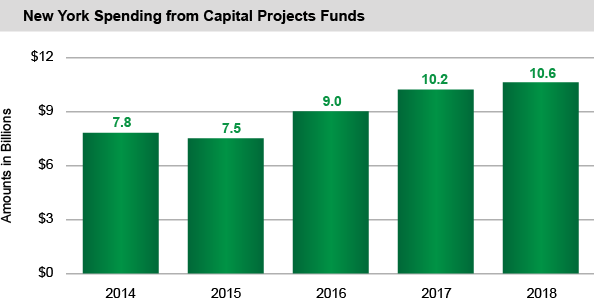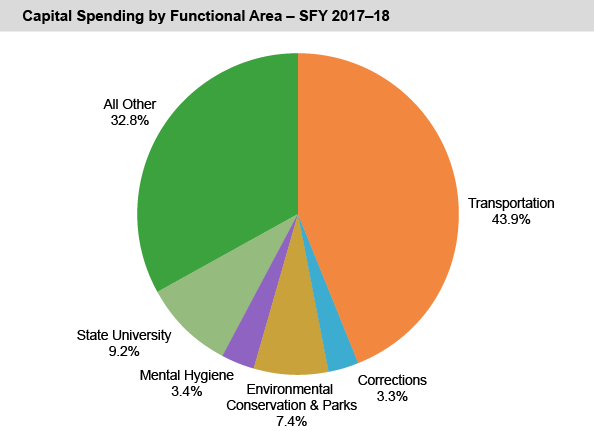The deterioration of capital assets can weaken the State’s economy and its ability to attract and retain business, while a robust, efficiently managed capital investment program can support economic growth. Capital assets include not only highways and bridges, but also facilities for education, government, health and recreation.
Capital Spending Has Increased Over the Past Five Years
- From 2014 to 2018, capital spending increased by nearly $2.9 billion (37.3 percent).
- Capital spending for transportation increased by $878 million (23.2 percent). The increase is primarily attributable to:
- Federally funded projects;
- The Consolidated Highway Improvement Program being shifted to an on-budget accounting structure;
- Mass transportation projects; and
- Projects funded from the Dedicated Infrastructure Investment Fund.
- Capital spending for All Other purposes increased by $1.8 billion (105.3 percent). The increase is attributable to major economic development initiatives carried out by the State’s public authorities in recent years.
- State University capital spending decreased by $107 million (9.8 percent).
- Capital spending for transportation increased by $878 million (23.2 percent). The increase is primarily attributable to:
- Over the past 25 years, the State has financed an average of 41 percent of nonfederal capital spending through current operations on a pay-as-you-go basis.
- For the next five years, the State projects:
- Capital spending to average $13.3 billion per year; and
- The share of nonfederal capital spending financed on a pay-as-you-go basis to average 32.9 percent.
At the end of SFY 2017-18, the State reported $106.2 billion in capital assets, an increase of $1.4 billion (1.3 percent) over the prior year.


